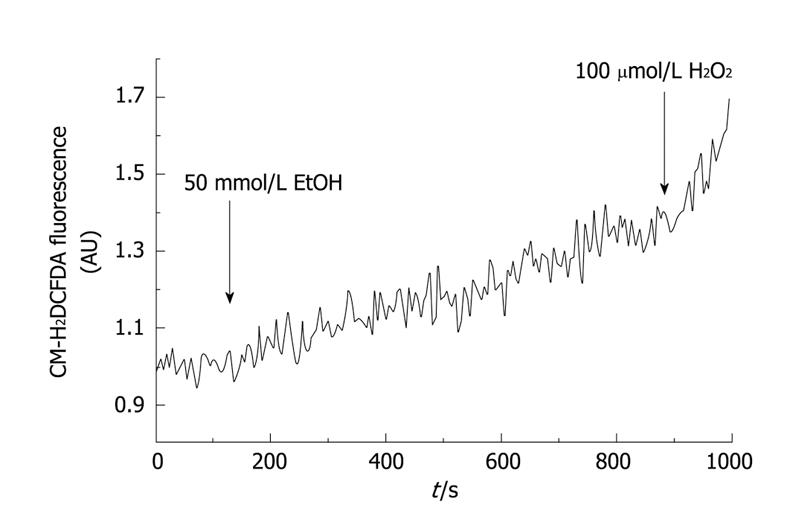Copyright
©2010 Baishideng.
World J Gastrointest Pharmacol Ther. Feb 6, 2010; 1(1): 3-8
Published online Feb 6, 2010. doi: 10.4292/wjgpt.v1.i1.3
Published online Feb 6, 2010. doi: 10.4292/wjgpt.v1.i1.3
Figure 2 Time-course of ethanol-evoked reactive oxygen species (ROS) production in mouse pancreatic acinar cells.
Pancreatic acinar cells were loaded with CM-H2DCFDA, a stable non-fluorescent molecule that yields a polar diol that is well retained within the cells. The diol can then be oxidized by ROS to a fluorescent form; therefore this dye has been proved to be an excellent probe for determination of ROS production. In this setup, stimulation of cells with 50 mmol/L ethanol (EtOH) led to a significant increase in ROS generation. At the end of the experiment H2O2 (100 μmol/L) was added, as a positive control for oxidation. a.u., absolute units of fluorescence.
- Citation: Tapia JA, Salido GM, González A. Ethanol consumption as inductor of pancreatitis. World J Gastrointest Pharmacol Ther 2010; 1(1): 3-8
- URL: https://www.wjgnet.com/2150-5349/full/v1/i1/3.htm
- DOI: https://dx.doi.org/10.4292/wjgpt.v1.i1.3









